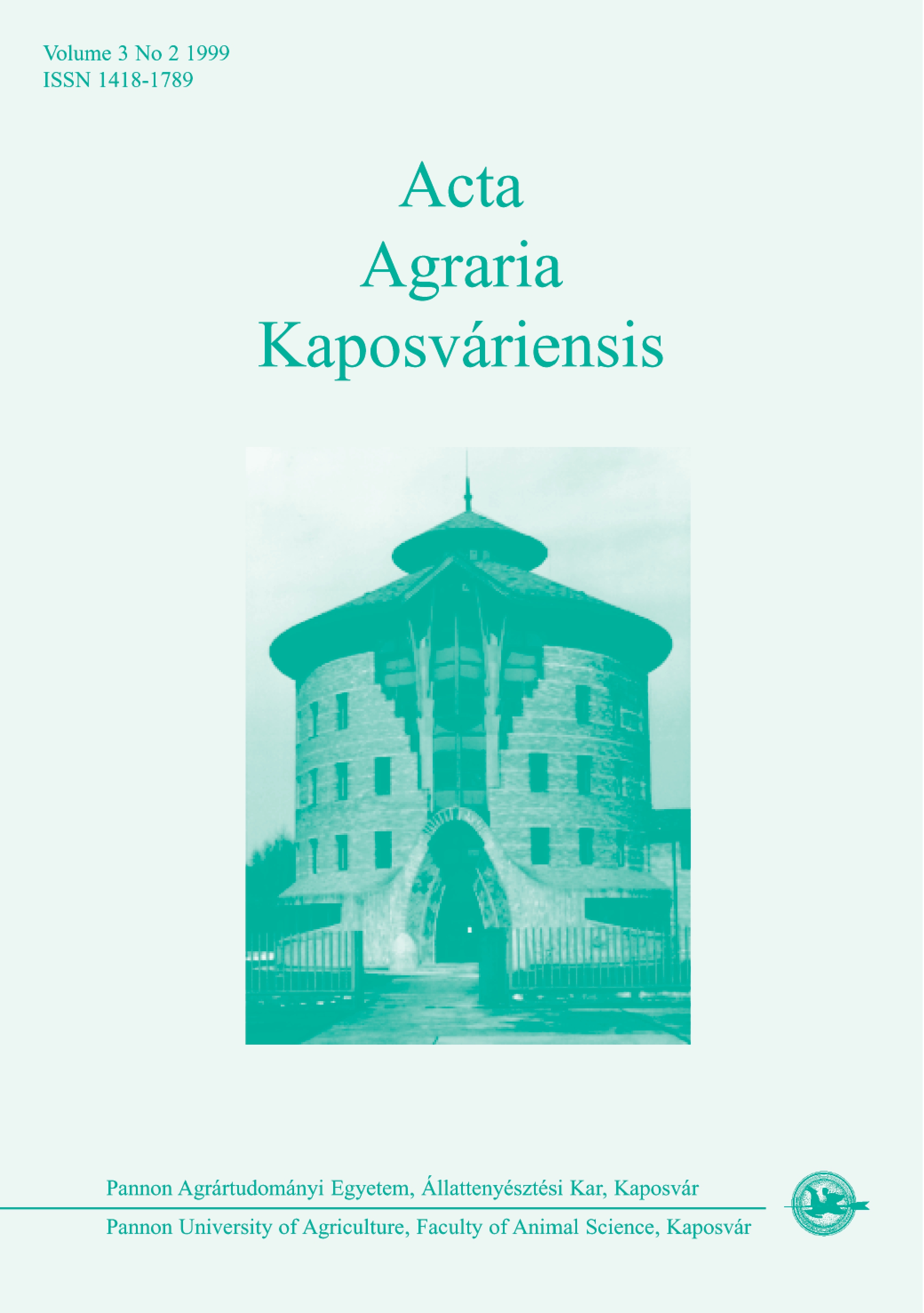Development of the fourth primary wing feathers in three types of duck
Kulcsszavak:
ducks, plumage, feather developmentAbsztrakt
This study examined the development of the 4th primary wing feathers in three types of duck of greatly different genotype: the Pekin, the mule and the muscovy duck, in the first 12 weeks of life of the birds. The end-products of 200 Pekin type ducks, 200 muscovy ducks and 200 mule ducks originating from the Palotási Kacsafarm Kft. (Hungary) were the subject of the investigations carried out in this study. The ducks were raised separated according to sex. Each duck was fitted with a wing band, to enable the individual parameters to be monitored. The ducks were accommodated in 6 pens, separated according to genotype and sex. The ground area of the pens was 14 m2. The initial stock density of birds per m was gradually reduced to a level of 2.8 birds per nr. Lighting was provided for a period of 23 hours per day in the first week, 18 hours per day in the second week and 12 hours per day from the third week. The initial lighting intensity was 18–20 Lux, being reduced gradually to 6–7 Lux. This was important, particularly due to the violent temperament of the muscovy ducks. The ducks were fed ad libitum. On the basis of the results obtained it was established that plumage growth both began and reached completion in the Pekin type first. By the 9th–10th week of life these birds had also reached slaughter maturity with respect to plumage development. The muscovy stock was the last to begin feather growth. Subsequent processing of the birds, mature for slaughter with respect to live weight, was hampered by the presence of feather sheaths. The mule ducks produced values between those observed in the Pekin type and in the Muscovy ducks for the parameters examined, but these had also failed to reach slaughter maturity as defined on the basis of plumage by the end of the experimental period. For the purposes of ensuring economically efficient processing of waterfowl, the requirement in the practical field is for ducks with rapid feather development; thus, the authors judge the developmental breeding of the faster fledging lines of the mule and the muscovy duck to be of great importance in breeding activity.
Hivatkozások
Gehre, G. (1975). Untersuchungen zum Befiederungsverlauf bei Enten und Gaensen, Karl-Marx-Universitaet, Leipzig.
Lohle, K. (1969). Einfluss unterschiedlichen Haltung und Futterung auf die Befiederung der Enten bei Trockenmast, Tierzucht, 23. 514–516.
Letöltések
Megjelent
Folyóirat szám
Rovat
License
Copyright (c) 1999 Sándor Szász, Ferenc Bogenfürst, M. Varju

This work is licensed under a Creative Commons Attribution-NonCommercial-NoDerivatives 4.0 International License.






